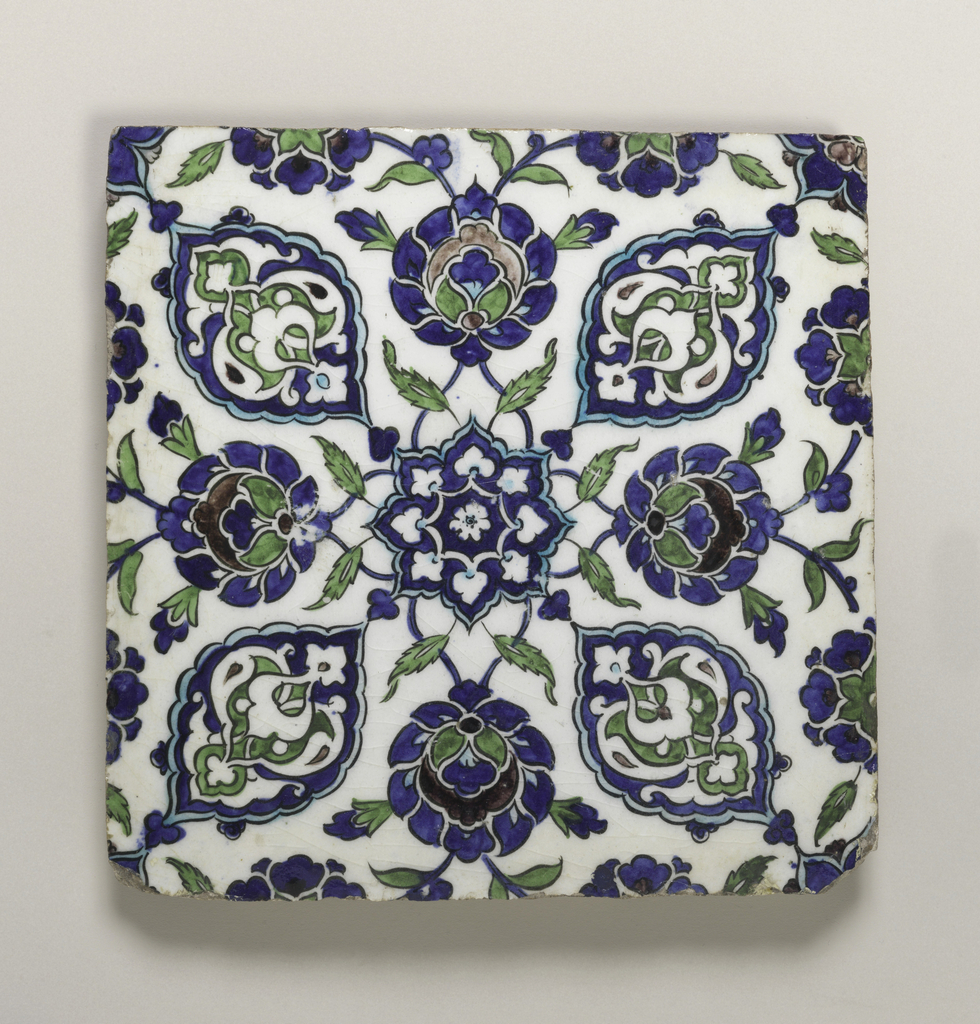Decorative tiles from many parts of the Middle East and Asia became very desirable collectibles starting in the 1870s when the enthusiasm for Islamic design pervaded much of the aesthetic movement decorative arts. While the Western purchaser of this tile from the Ottoman Empire is unknown, Lockwood de Forest and Frederic Church were among the many travelers and designers who collected similar examples from Turkey, Syria and what is now Iran.
Originally designed to be arranged in groups on walls and floors, in mosques and palaces, these tiles usually have motifs that can be grouped on fours so that the corner motifs become larger when put together, and often had borders that related to the design, or incorporated part of it, that could frame the others to give the impression of a carpet or framed pictorial wall. Glazed tiles, generally of earthenware with a metal such as tin or, in this case, possibly lead mixed into the glaze before firing to give both strength and shine, make very good wall decoration. The glaze helps keep them, and thereby the rooms they are in, cool–an asset in the hot climates where they were created. In addition the glaze creates a hard surface to which loose sand does not adhere, and makes an easy surface to clean. The surface also reflects light better, making them add to the pattern of light from candlelit spaces.
Frederic, Lord Leighton, a painter and aesthete in London, chose to cover his walls in tiles in his house, creating an Arab hall after he went to the Middle East in the 1870s. Frederic Church combined Indian carved teakwood panels and mantel designed by Lockwood de Forest with tiles Church had collected in the Middle East. However, these nineteenth century creations really show the glories of centuries earlier when tiles provided lush decoration often looking like oases in hot and brown surroundings.
This tile will be included in the exhibition Passion for the Exotic: Lockwood de Forest, Frederic Church, beginning December 12, 2014.
Sarah D. Coffin is head of the Product Design and Decorative Arts Department at Cooper Hewitt Smithsonian Design Museum. She is also co-curator of Passion for the Exotic: Lockwood de Forest, Frederic Church.
